William K Irvine
age ~92
from Levittown, PA
- Also known as:
-
- Bill K Irvine
- Stephen P Irvine
- Phone and address:
- 9101 New Falls Rd APT B13, Levittown, PA 19054
William Irvine Phones & Addresses
- 9101 New Falls Rd APT B13, Levittown, PA 19054
- Garden Grove, CA
- Salt Lake Cty, UT
- Long Beach, CA
Us Patents
-
Systems And Methods For Making Decorative Shaped Metal Cans
view source -
US Patent:57460809, May 5, 1998
-
Filed:Dec 12, 1995
-
Appl. No.:8/551073
-
Inventors:Mark W. Hartman - Lambertville NJ
Zeev W. Shore - Hazel Crest IL
James J. Tang - Palatine IL
Anton A. Aschberger - Downers Grove IL
Michael R. Gogola - Oak Forest IL
William O. Irvine - Chicago IL
Ralph J. Trnka - Tinley Park IL
Richard O. Wahler - Palatine IL
Robert A. Winkless - Oak Lawn IL -
Assignee:Crown Cork & Seal Company, Inc. - Philadelphia PA
-
International Classification:B21D 2602
-
US Classification:72 61
-
Abstract:A method of manufacturing a metallic can body that is shaped distinctively in order to enhance its visual presentation to consumers includes, in one embodiment, steps of providing a can body blank that has a sidewall that is of a substantially constant diameter; providing a mold unit that has at least one mold wall that defines a mold cavity that is shaped generally like the can body blank, the mold wall having a pattern formed therein that corresponds to a desired final shape of the can body; positioning the can body blank within the mold cavity; and supplying a pressurized fluid into the mold cavity so that the can body blank is forced by pressure against the mold wall, causing the can body blank to assume the desired final shape of the can body. A second embodiment includes steps of radially deforming the can body blank in selected areas by selected amounts to achieve an intermediate can body that is radially modified, but is still symmetrical about its axis; and superimposing a preselected pattern of mechanical deformations that have an axial component onto the intermediate can body. Related systems and processes are also disclosed.
-
Systems And Methods For Making Decorative Shaped Metal Cans
view source -
US Patent:59606592, Oct 5, 1999
-
Filed:Feb 18, 1998
-
Appl. No.:9/025609
-
Inventors:Mark W. Hartman - Lambertville NJ
Zeev W. Shore - Hazel Crest IL
James J. Tang - Palatine IL
Anton A. Aschberger - Downers Grove IL
Michael R. Gogola - Oak Forest IL
William O. Irvine - Chicago IL
Ralph J. Trnka - Tinley Park IL
Richard O. Wahler - Palatine IL
Robert A. Winkless - Oak Lawn IL -
Assignee:Crown Cork & Seal Company, Inc. - Philadelphia PA
-
International Classification:B21D 2602
-
US Classification:72 61
-
Abstract:A method of manufacturing a metallic can body that is shaped distinctively in order to enhance its visual presentation to consumers includes, in one embodiment, steps of providing a can body blank that has a sidewall that is of a substantially constant diameter; providing a mold unit that has at least one mold wall that defines a mold cavity that is shaped generally like the can body blank, the mold wall having a pattern formed therein that corresponds to a desired final shape of the can body; positioning the can body blank within the mold cavity; and supplying a pressurized fluid into the mold cavity so that the can body blank is forced by pressure against the mold wall, causing the can body blank to assume the desired final shape of the can body. A second embodiment includes steps of radially deforming the can body blank in selected areas by selected amounts to achieve an intermediate can body that is radially modified, but is still symmetrical about its axis; and superimposing a preselected pattern of mechanical deformations that have an axial component onto the intermediate can body. Related systems and processes are also disclosed.
-
Systems And Methods For Making Decorative Shaped Metal Cans
view source -
US Patent:58327665, Nov 10, 1998
-
Filed:Jul 15, 1996
-
Appl. No.:8/683575
-
Inventors:Mark W. Hartman - Lambertville NJ
Zeev W. Shore - Hazel Crest IL
James J. Tang - Palatine IL
Anton A. Aschberger - Downers Grove IL
Michael R. Gogola - Oak Forest IL
William O. Irvine - Golden CO
Ralph J. Trnka - Tinley Park IL
Richard O. Wahler - Palatine IL
Robert A. Winkless - Oak Lawn IL
Richard Mark Orlando Golding - Hinsdale IL
David Harvey - Oxon, GB3 -
Assignee:Crown Cork & Seal Technologies Corporation - Alsip IL
-
International Classification:B21D 2602
-
US Classification:72 62
-
Abstract:A method of manufacturing a metallic can body that is shaped distinctively in order to enhance its visual presentation to consumers includes, in one embodiment, steps of providing a can body blank that has a sidewall that is of a substantially constant diameter; providing a mold unit that has at least one mold wall that defines a mold cavity conforming a desired final shape of the can body; positioning the can body blank within the mold cavity; and supplying a pressurized fluid into the mold cavity so that the can body blank is forced by pressure against the mold wall, causing the can body blank to assume the desired final shape of the can body. Axial compression is preferably applied to the can body blank in order to reduce internal stresses during molding of the container. A second embodiment includes steps of radially deforming the can body blank in selected areas by selected amounts to achieve an intermediate can body that is radially modified, but is still symmetrical about its axis; and superimposing a preselected pattern of mechanical deformations that have an axial component onto the intermediate can body. Related apparatus and processes are also disclosed.
-
Systems And Methods For Making Decorative Shaped Metal Cans
view source -
US Patent:59707674, Oct 26, 1999
-
Filed:Aug 28, 1998
-
Appl. No.:9/143082
-
Inventors:Mark W. Hartman - Lambertville NJ
Zeev W. Shore - Hazel Crest IL
James J. Tang - Palatine IL
Anton A. Aschberger - Downers Grove IL
Michael R. Gogola - Oak Forest IL
William O. Irvine - Golden CO
Ralph J. Trnka - Tinley Park IL
Richard O. Wahler - Palatine IL
Robert A. Winkless - Oak Lawn IL
Richard Mark Orlando Golding - Hinsdale IL
David Harvey - Wantage, GB -
Assignee:Crown Cork & Seal Technologies Corporation - Alsip IL
-
International Classification:B21D 2602
-
US Classification:72 62
-
Abstract:A method of manufacturing a metallic can body that is shaped distinctively in order to enhance its visual presentation to consumers includes, in one embodiment, steps of providing a can body blank that has a sidewall that is of a substantially constant diameter; providing a mold unit that has at least one mold wall that defines a mold cavity conforming a desired final shape of the can body; positioning the can body blank within the mold cavity; and supplying a pressurized fluid into the mold cavity so that the can body blank is forced by pressure against the mold wall, causing the can body blank to assume the desired final shape of the can body. Axial compression is preferably applied to the can body blank in order to reduce internal stresses during molding of the container. A second embodiment includes steps of radially deforming the can body blank in selected areas by selected amounts to achieve an intermediate can body that is radially modified, but is still symmetrical about its axis; and superimposing a preselected pattern of mechanical deformations that have an axial component onto the intermediate can body. Related apparatus and processes are also disclosed.
-
Lock And Key Colloids And Methods Of Manufacture
view source -
US Patent:20140343181, Nov 20, 2014
-
Filed:Aug 4, 2014
-
Appl. No.:14/451160
-
Inventors:- New York NY, US
Paul Michael Chaikin - Pennington NJ, US
Stefano Sacanna - New York NY, US
William Irvine - New York NY, US -
International Classification:B01J 13/00
C08L 33/14
C08L 25/06 -
US Classification:521139
-
Abstract:A method and system for assembling building blocks of colloidal particles and also for shaping of colloids for self-assembly for manufacturing, processing and formation of compositions of matter. A first type of particle is selected as a “key” particle constructed to mate with a “lock” particle, the binding arising from depletion forces. A variety of shapes can be used to carry out this method and system to create compositions of matter. Colloids can be shaped by controlled deformation of multiphase colloid particles.
Medicine Doctors

William D. Irvine
view sourceSpecialties:
Ophthalmology
Work:
Memphis Eye & Cataract AssocsMECA Eye & Laser Center
6485 Poplar Ave, Memphis, TN 38119
9017673937 (phone), 9017671747 (fax)
Southern Eye Associates PLLC
5350 Poplar Ave STE 950, Memphis, TN 38119
9016834600 (phone), 9016838401 (fax)
Rice Eye Associates
6238 Poplar Ave, Memphis, TN 38119
9017614292 (phone)
Retina Consultants
1000 Vann Dr STE A, Jackson, TN 38305
7316683161 (phone), 7316683162 (fax)
Meyer Eye Group
1000 Brookfield Rd STE 250, Memphis, TN 38119
9015226520 (phone), 9015226521 (fax)
6485 Poplar Ave, Memphis, TN 38119
9017673937 (phone), 9017671747 (fax)
Southern Eye Associates PLLC
5350 Poplar Ave STE 950, Memphis, TN 38119
9016834600 (phone), 9016838401 (fax)
Rice Eye Associates
6238 Poplar Ave, Memphis, TN 38119
9017614292 (phone)
Retina Consultants
1000 Vann Dr STE A, Jackson, TN 38305
7316683161 (phone), 7316683162 (fax)
Meyer Eye Group
1000 Brookfield Rd STE 250, Memphis, TN 38119
9015226520 (phone), 9015226521 (fax)
Education:
Medical School
University of Tennessee College of Medicine at Memphis
Graduated: 1987
University of Tennessee College of Medicine at Memphis
Graduated: 1987
Procedures:
Destruction of Lesion of Retina and Choroid
Retinal Detachment Repair
Corneal Surgery
Eyeglass Fitting
Lens and Cataract Procedures
Ophthalmological Exam
Retinal Detachment Repair
Corneal Surgery
Eyeglass Fitting
Lens and Cataract Procedures
Ophthalmological Exam
Conditions:
Acute Conjunctivitis
Cataract
Diabetic Retinopathy
Glaucoma
Keratitis
Cataract
Diabetic Retinopathy
Glaucoma
Keratitis
Languages:
English
Description:
Dr. Irvine graduated from the University of Tennessee College of Medicine at Memphis in 1987. He works in Memphis, TN and 4 other locations and specializes in Ophthalmology. Dr. Irvine is affiliated with Baptist Memorial Hospital Memphis, Methodist Hospital South, Methodist University Hospital, Saint Francis Hospital Memphis and Select Specialty Hospital Memphis.

William P. Irvine
view sourceSpecialties:
Family Medicine
Work:
Saint Luke's ClinicSt Lukes Clinic
3950 17 St STE A, Baker City, OR 97814
5415231001 (phone), 5415231152 (fax)
3950 17 St STE A, Baker City, OR 97814
5415231001 (phone), 5415231152 (fax)
Education:
Medical School
Oregon Health & Science University School of Medicine
Graduated: 2005
Oregon Health & Science University School of Medicine
Graduated: 2005
Languages:
English
Spanish
Spanish
Description:
Dr. Irvine graduated from the Oregon Health & Science University School of Medicine in 2005. He works in Baker City, OR and specializes in Family Medicine. Dr. Irvine is affiliated with Saint Alphonsus Medical Center-Baker City.

William John Irvine
view sourceSpecialties:
Family Medicine
General Practice
General Practice
Education:
University of Guadalajara, Mexico (1986)
Wikipedia References

William C . Irvine
Work:
Position:
Author
Resumes

Information Systems Technician At 10Th Sfg(A)
view sourceLocation:
United States
Industry:
Government Administration
Isbn (Books And Publications)




The Book, the Ring, & the Poet: A Biography of Robert Browning
view sourceAuthor
William Irvine
ISBN #
0070320454



The Book, the Ring, & the Poet: A Biography of Robert Browning
view sourceAuthor
William Irvine
ISBN #
0370103629

Name / Title
Company / Classification
Phones & Addresses
President
THOR BARBELL U.S.A.-WASHINGTON, INC
Vice President
BENCHMARK SYSTEMS OF WASHINGTON, INC
ONE SOURCE EQUIPMENT RENTALS OF DAYTON, LLC
License Records
William Robertson Irvine
Address:
Salt Lake City, UT
License #:
103973-2001 - Expired
Category:
Environmental Health Scientist
Issued Date:
Jan 1, 1911
Expiration Date:
May 31, 1997
Type:
Environmental Health Scientist
William S Irvine Iii
Address:
Salt Lake City, UT
License #:
296475-6502 - Expired
Category:
Burglar Alarm
Issued Date:
Mar 4, 1993
Expiration Date:
Mar 5, 1994
Type:
Burglar Alarm Company Agent
William J Irvine
License #:
P19798 - Active
Category:
Emergency medical services
Issued Date:
Apr 4, 2003
Expiration Date:
Apr 30, 2019
William K Irvine
Address:
Levittown, PA 19054
License #:
PN152096L - Expired
Category:
Nursing
Type:
Practical Nurse
Youtube
Myspace
Classmates

William Irvine
view sourceSchools:
Montgomery High School Calgary Azores 1961-1965
Community:
David Mcintosh, Zane Gray, Elroy Tidlund

William Nickles (Irvine)
view sourceSchools:
St. Francis De Sales High School Mckees Rocks PA 1948-1960
Community:
Sandra Osburn, Rollin Engle, Kathy Kathleen, Thomas Donovan

William Irvine
view sourceSchools:
James Madison University High School Milwaukee WI 1967-1971

William Irvine
view sourceSchools:
Balaclava Public School Waterdown Morocco 1997-2001
Community:
Annette Wilks, Amanda Farrow, Ashly Mcfarlane, Jessica Wilson, Jeff Cain

William Irvine
view sourceSchools:
CW Jefferys Collegiate Institute Toronto Morocco 1984-1988
Community:
Norman Applegate, Cathy Johnson, Wayne Morrison, Cathy Milley

William Irvine
view sourceSchools:
Columbia High School Columbia SC 1951-1955
Community:
Doris Mills, John Younginer, Robert Mims, Cecil Smoak, Libby Bloom, Betty Duensing, Patty Spradley, Kirk Robinson, Dick James, Pat Calvert, Ann Bleckley

William Irvine
view sourceSchools:
Christ the King School Daphne AL 1975-1983
Community:
Billy Cooper, Fred Hirz
News

A new approach to controlling the properties of turbulence
view source- "Turbulence can be found everywhere. Stirring coffee with a spoon is a good example," Takumi Matsuzawa (first author on the study) and William Irvine (corresponding author on the study), told Phys.org. "Nevertheless, manipulating this ephemeral phase of matter is not as easy as the other conventiona
- Date: Jun 20, 2023
- Category: Science
- Source: Google

Tempest in a teacup: Physicists make breakthrough in creating turbulence
view source- was a surprise to us," said physicist Takumi Matsuzawa, the first author on a study describing the findings, published in Nature Physics. "It'd be like calmly sitting in a field with a picnic and watching a storm raging 50 feet away," said Prof. William Irvine, the corresponding author on the study."
- Date: Jun 15, 2023
- Category: Science
- Source: Google

Islam and other religions
view source- Manucci, Niccolao; tr. by William Irvine (1907). Storia do Mogor; or, Mogul India 1653-1708, Vol. 1. London, J. Murray.Manucci, Niccolao; tr. by William Irvine (1907). Storia do Mogor; or, Mogul India 1603-1708, Vol. 2. London, J. Murray.Manucci, Niccolao; tr. by William Irvine (1907). Storia do M
- Date: Oct 03, 2014
- Category: World
- Source: Google

Physicists Tie Fluid Into a Knot
view source- "We look at plasma physics and turbulence every day in the sun," Study researcher William Irvine said. Those fields have many mysteries, long unsolved, that could be better understood by knowing how a vortex knot works. Plasma flows behave in highly complicated ways, but the electrically charged gas
- Date: Mar 04, 2013
- Category: Sci/Tech
- Source: Google

Vortex loops could untie knotty physics problems
view source- Kleckner and William Irvine, assistant professor in physics, report their findings on the creation and dynamics of vortex rings in Nature Physics, published online on March 3. Their work relates to deep questions in a variety of physics subfields, including turbulence, plasma physics, ordinary fluid
- Date: Mar 04, 2013
- Category: Sci/Tech
- Source: Google
Plaxo

William Irvine
view sourceHemet, CA
Flickr
Googleplus
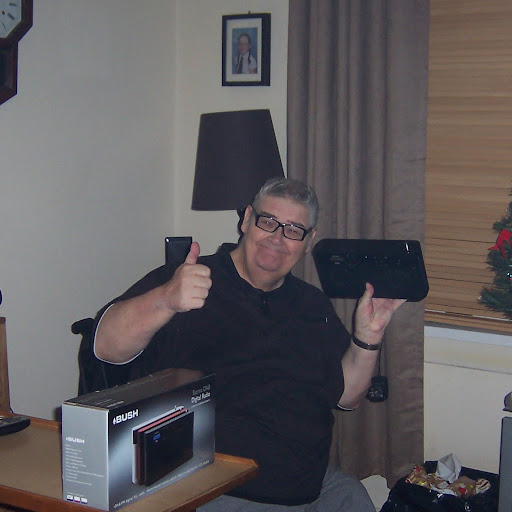
William Irvine
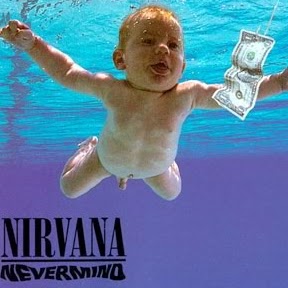
William Irvine
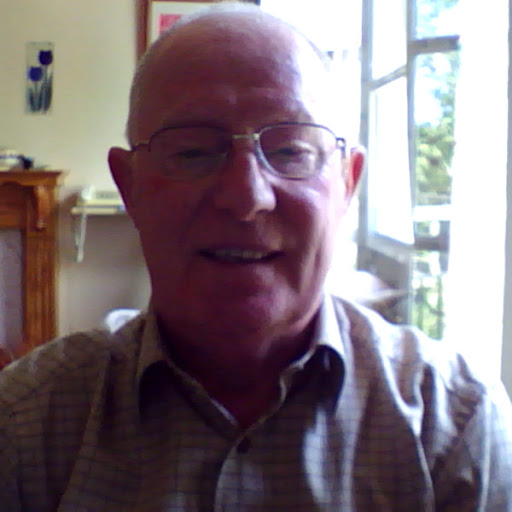
William Irvine
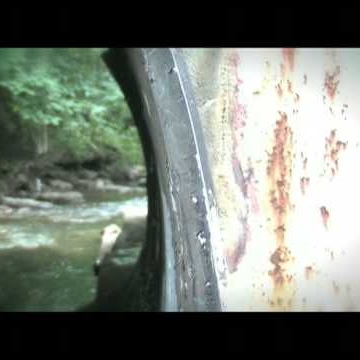
William Irvine
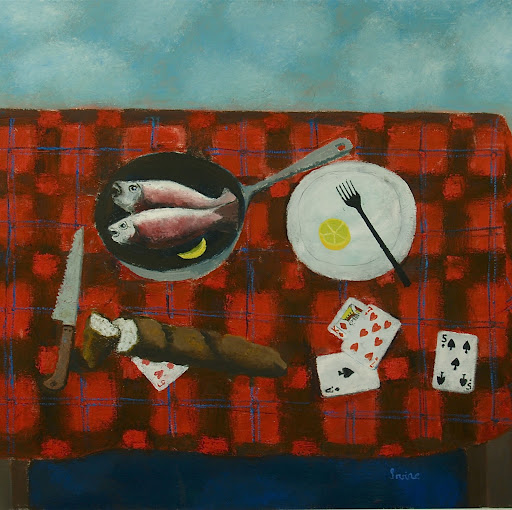
William Irvine

William Irvine

William Irvine

William Irvine

William Irvine
view source
William Irvine
view source
Robby William Irvine Huta...
view source
Andy William Irvine
view source
William Irvine
view source
William Irvine
view source
William Jason Irvine
view source
William Irvine
view sourceGet Report for William K Irvine from Levittown, PA, age ~92













